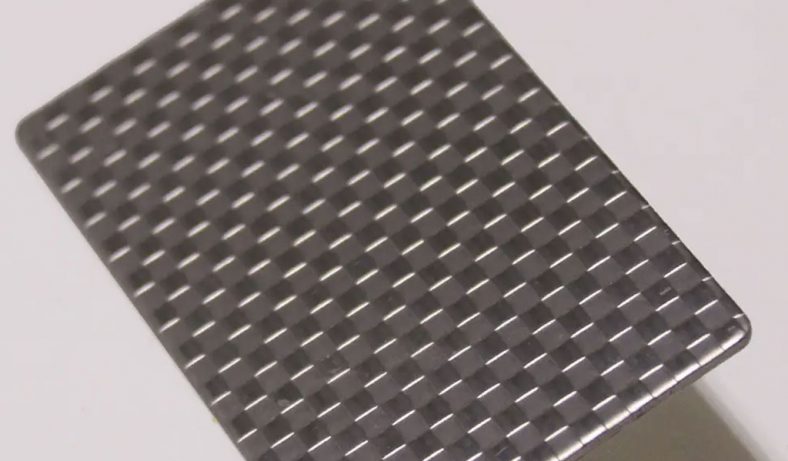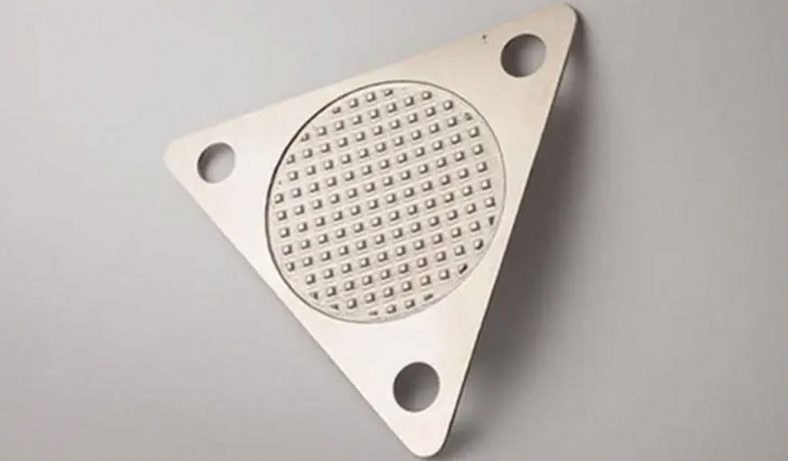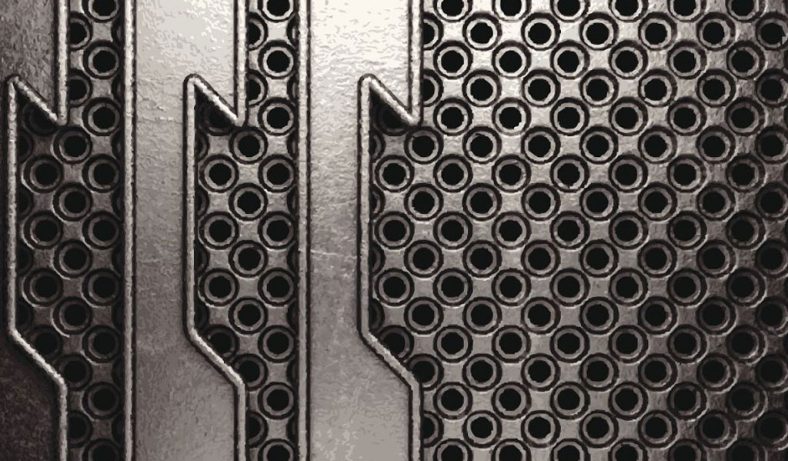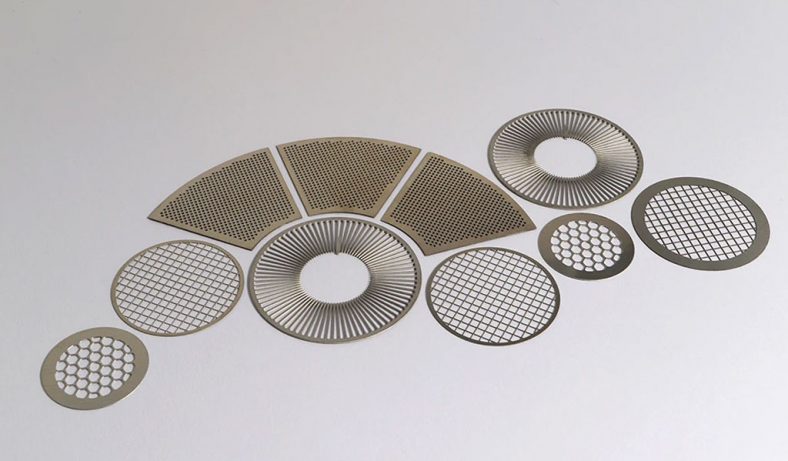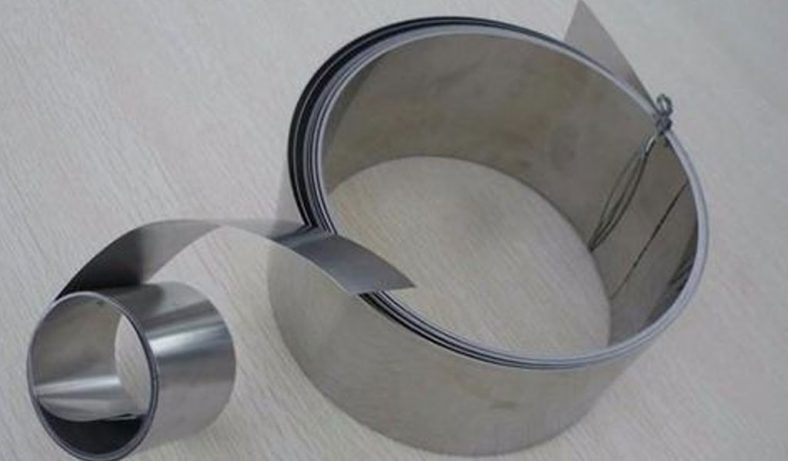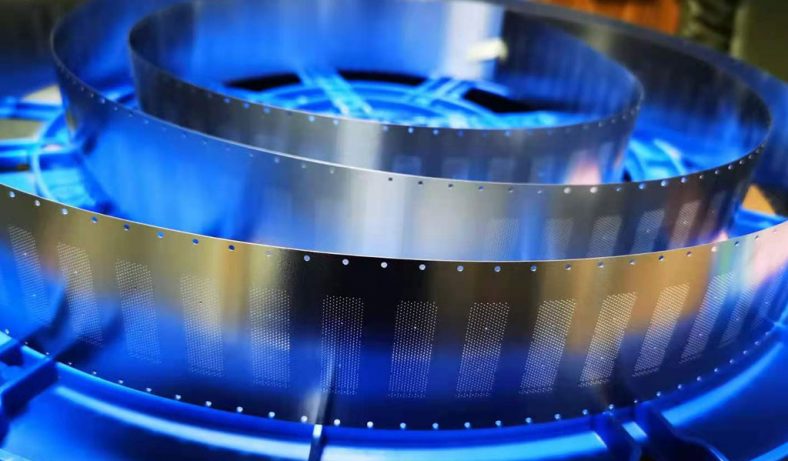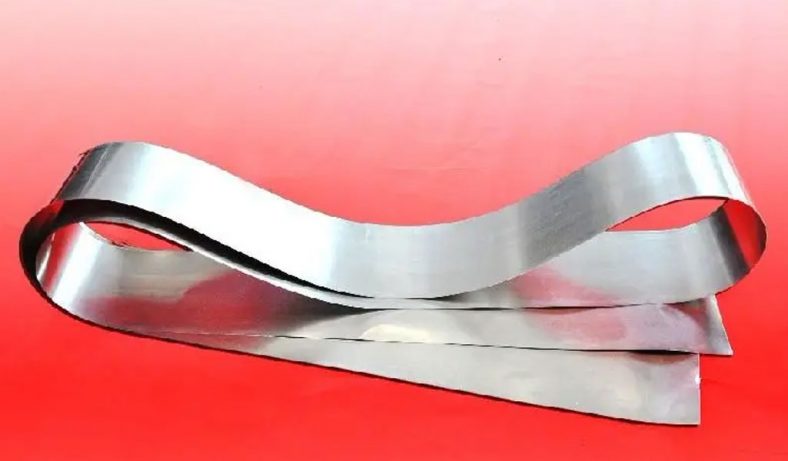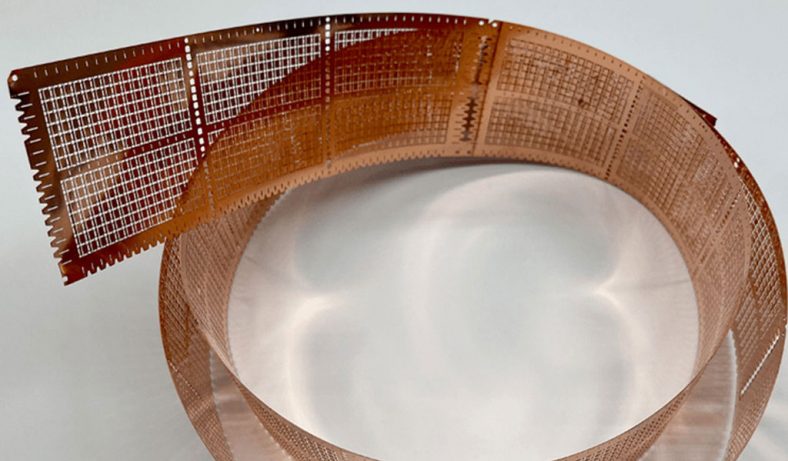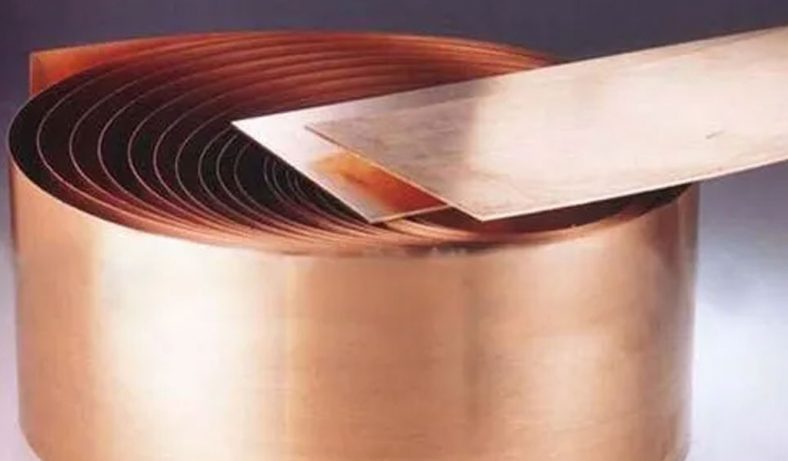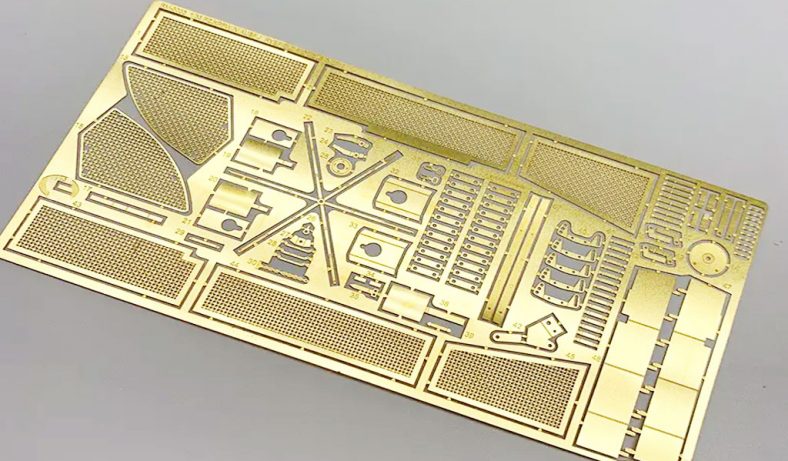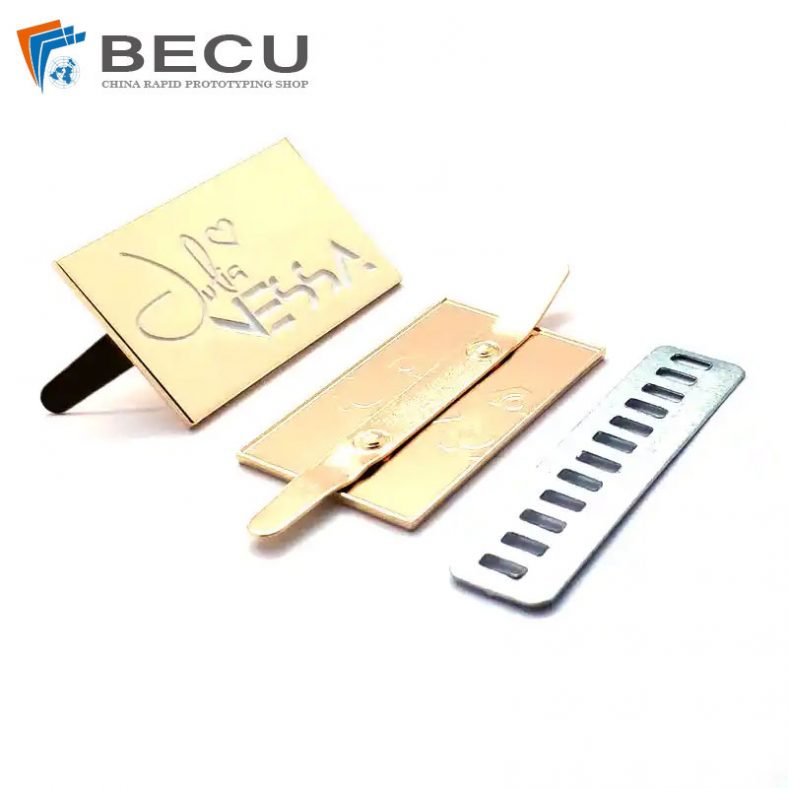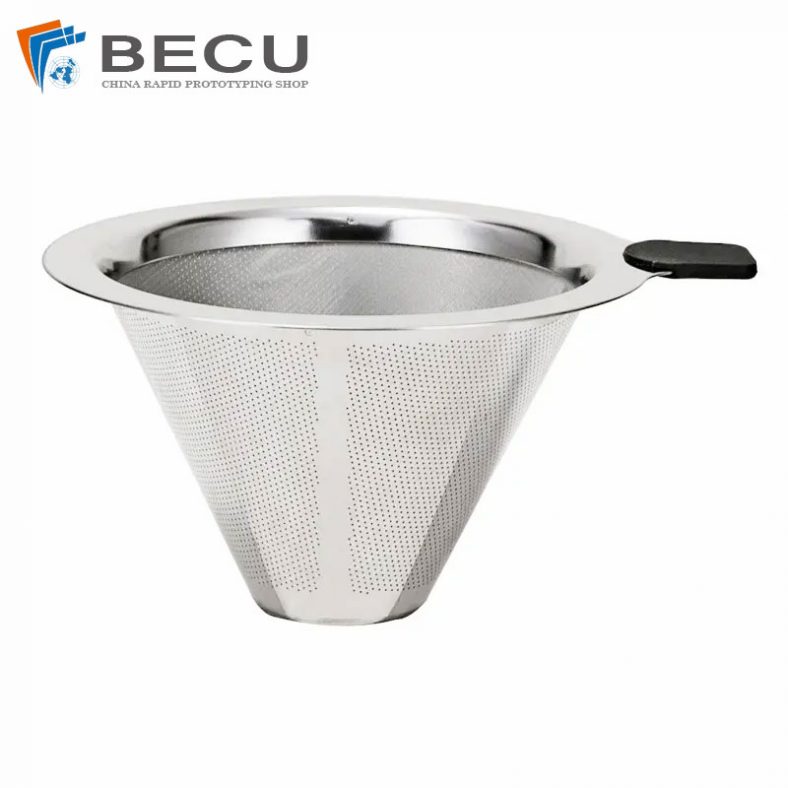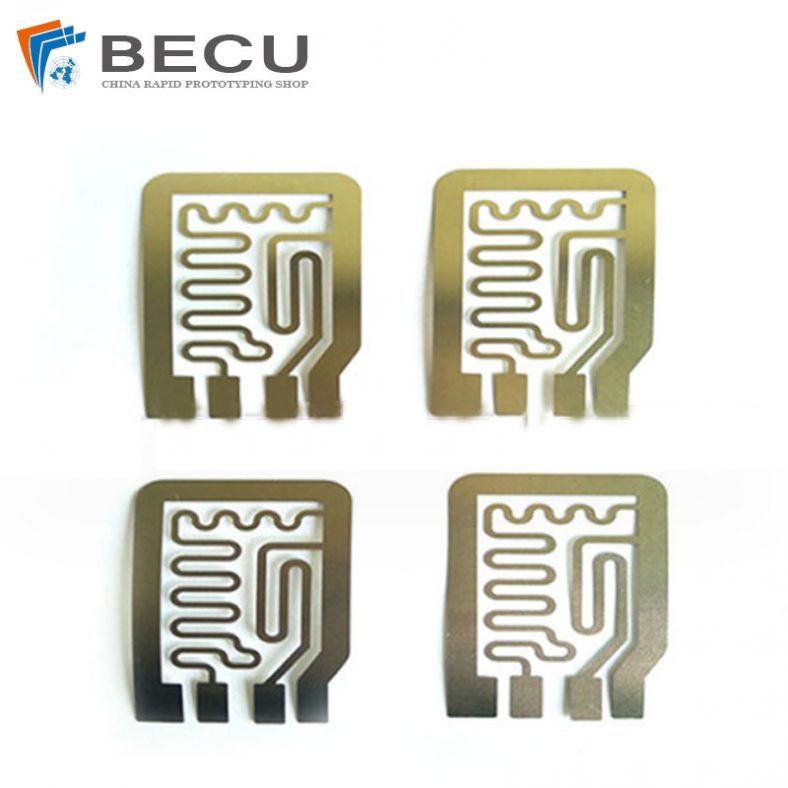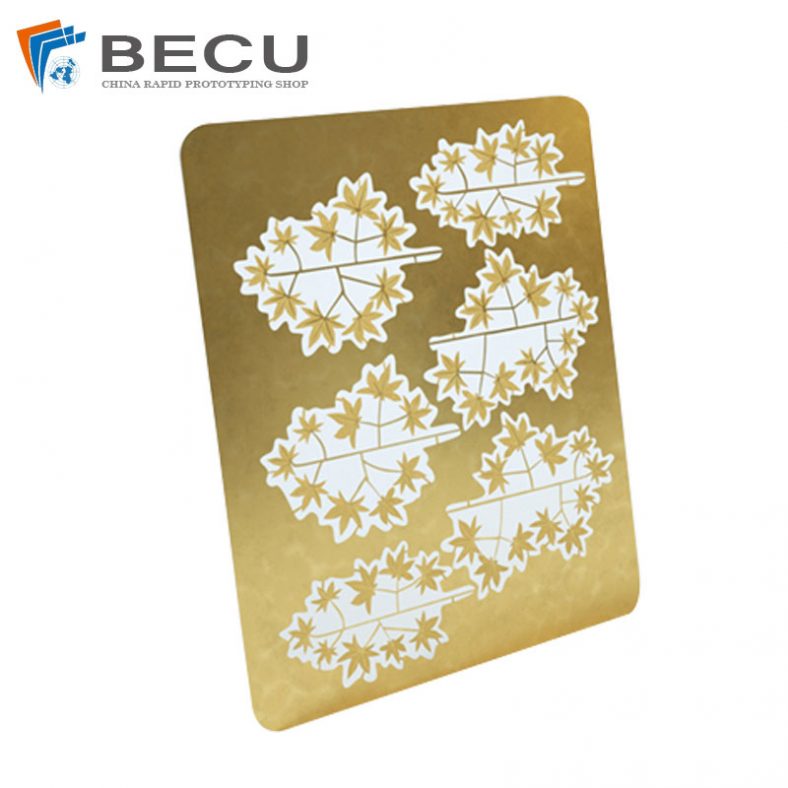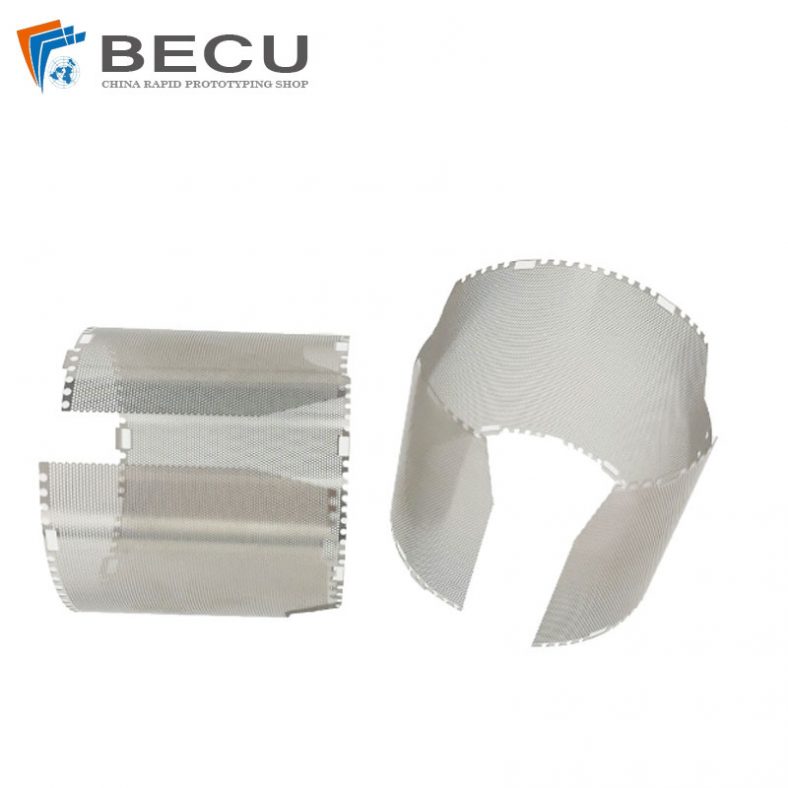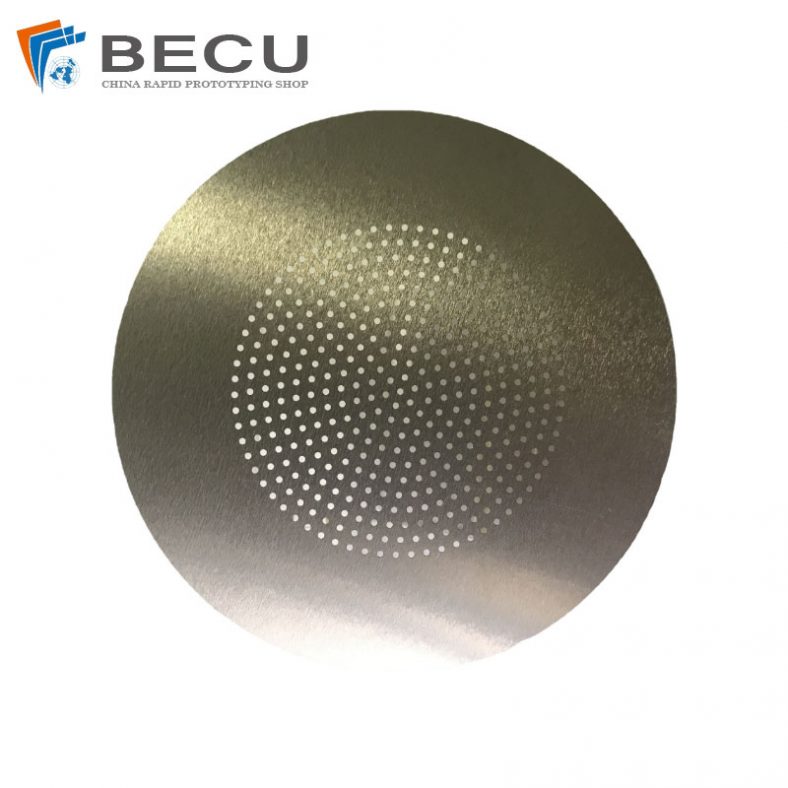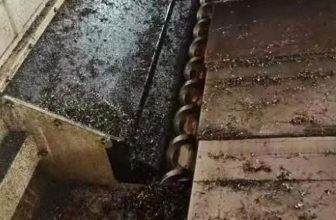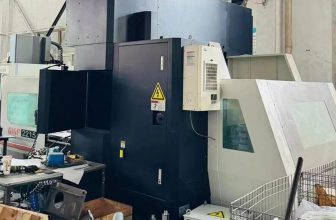Microfluidic chips, pivotal in applications ranging from biomedical diagnostics to environmental monitoring, leverage microscale fluid dynamics to perform complex analyses with minimal sample volumes. These devices, often fabricated from materials such as silicon, glass, polymers, or metals like aluminum alloys, require precise microfabrication techniques to create intricate microchannel networks. Among these techniques, dry etching stands out for its ability to achieve high-resolution patterns with anisotropic profiles, making it a preferred method for structuring aluminum alloy-based microfluidic chips. However, the energy consumption associated with dry etching processes, particularly for aluminum alloys, is a critical concern due to its implications for cost, scalability, and environmental sustainability.
This article provides a comprehensive analysis of the energy consumption of dry etching in the preparation of aluminum alloy microfluidic chips. It explores the principles of dry etching, the specific challenges of etching aluminum alloys, and the energy demands of various dry etching techniques. The discussion is structured to cover the theoretical foundations, process parameters, equipment considerations, and comparative energy analyses, supplemented by detailed tables for clarity. The goal is to offer a rigorous, scientifically grounded resource for researchers, engineers, and policymakers interested in optimizing microfabrication processes for sustainability and efficiency.
Fundamentals of Dry Etching
Definition and Mechanisms
Dry etching, a cornerstone of microfabrication, involves the removal of material from a substrate surface using gaseous reactants, typically in a plasma environment, without the use of liquid etchants. Unlike wet etching, which relies on chemical dissolution, dry etching employs physical (sputtering), chemical (reactive gas interactions), or hybrid mechanisms to achieve precise material removal. The process is particularly suited for creating high-aspect-ratio features and fine patterns required in microfluidic chips.
In the context of aluminum alloy microfluidic chips, dry etching typically involves reactive ion etching (RIE) or inductively coupled plasma (ICP) etching. These methods use plasma-generated ions and reactive species to etch the aluminum alloy surface selectively, guided by a patterned mask, often a photoresist or hard mask like silicon nitride. The primary gases used include chlorine-based compounds (e.g., BCl₃, Cl₂) due to their reactivity with aluminum, forming volatile aluminum trichloride (AlCl₃) that is easily removed from the etch chamber.
Advantages in Microfluidic Chip Fabrication
Dry etching offers several advantages for fabricating aluminum alloy microfluidic chips:
- Anisotropy: Produces near-vertical sidewalls, essential for deep, narrow microchannels.
- High Resolution: Enables feature sizes below 1 μm, critical for complex microfluidic designs.
- Selectivity: Allows precise etching of aluminum alloys over mask materials or underlying substrates.
- Compatibility: Suitable for integration with other microfabrication processes like photolithography.
However, these benefits come at the cost of significant energy consumption, driven by the need for plasma generation, vacuum systems, and temperature control, which this article examines in detail.
Aluminum Alloys in Microfluidic Chips
Properties and Applications
Aluminum alloys, composed primarily of aluminum with alloying elements such as copper, silicon, or magnesium, are increasingly used in microfluidic chips due to their favorable properties. These include:
- Lightweight: Aluminum alloys have a low density (~2.7 g/cm³), reducing the weight of microfluidic devices.
- Corrosion Resistance: Certain alloys, like Al 6061 or Al 7075, resist corrosion in aqueous environments, suitable for biological applications.
- Thermal Conductivity: High thermal conductivity (~150–200 W/m·K) aids in heat dissipation during microfluidic operations.
- Mechanical Strength: Alloys provide sufficient strength for robust chip designs, with yield strengths ranging from 200 to 500 MPa depending on the alloy.
In microfluidic applications, aluminum alloys are used in chips for lab-on-a-chip systems, chemical reactors, and point-of-care diagnostics, where their durability and compatibility with microfabrication processes are advantageous.
Challenges in Etching Aluminum Alloys
Etching aluminum alloys poses unique challenges due to their chemical and physical properties:
- Native Oxide Layer: Aluminum forms a thin, protective Al₂O₃ layer (2–5 nm) that resists etching, requiring initial oxide removal using chlorine-based plasmas.
- Alloying Elements: Elements like copper or silicon in alloys such as Al 6061 (0.8–1.2% Mg, 0.4–0.8% Si) or Al 7075 (5.1–6.1% Zn, 2.1–2.9% Mg) can form non-volatile etch byproducts, complicating the process.
- Selectivity: Achieving high selectivity between the aluminum alloy and mask materials (e.g., photoresist) is difficult due to the aggressive nature of chlorine-based plasmas.
- Residue Formation: Etch residues, such as aluminum chloride polymers, can deposit on sidewalls, requiring additional cleaning steps.
These challenges necessitate optimized etching conditions, which directly influence energy consumption.
Dry Etching Techniques for Aluminum Alloys
Reactive Ion Etching (RIE)
RIE combines physical sputtering and chemical etching by directing plasma-generated ions and reactive species toward the substrate. In aluminum alloy etching, RIE typically uses a mixture of BCl₃ and Cl₂, with BCl₃ breaking the native oxide and Cl₂ reacting with aluminum to form volatile AlCl₃. The process operates at pressures of 0.1–5 Torr and RF power levels of 100–500 W.
Energy Components:
- Plasma Generation: RF power supply consumes 0.5–2 kWh per hour, depending on chamber size and power settings.
- Vacuum System: Pumps maintaining 10⁻³–10⁻¹ Torr consume 0.3–1 kWh per hour.
- Temperature Control: Substrate cooling to prevent overheating adds 0.1–0.5 kWh per hour.
Inductively Coupled Plasma (ICP) Etching
ICP etching, a high-density plasma technique, uses a separate RF coil to generate a dense plasma, offering higher etch rates (up to 1–2 μm/min) and better anisotropy than RIE. For aluminum alloys, ICP systems often incorporate BCl₃/Cl₂ mixtures, sometimes with additives like Ar or N₂ to enhance selectivity or reduce residue formation.
Energy Components:
- ICP Coil Power: Typically 500–1500 W, consuming 1–3 kWh per hour.
- Bias Power: Substrate bias (100–300 W) adds 0.2–0.6 kWh per hour.
- Vacuum and Cooling: Similar to RIE, contributing 0.4–1.5 kWh per hour.
Other Techniques
- Deep Reactive Ion Etching (DRIE): A variant of RIE, DRIE uses cyclic etching and passivation (e.g., Bosch process) but is less common for aluminum alloys due to their reactivity with fluorine-based gases used in passivation.
- Ion Beam Etching (IBE): Relies on physical sputtering with inert gas ions (e.g., Ar⁺), but its low selectivity limits its use for aluminum alloys.
Each technique’s energy profile depends on process parameters, equipment design, and etching duration, which are analyzed subsequently.
Energy Consumption Factors in Dry Etching
Process Parameters
The energy consumption of dry etching is influenced by several parameters:
- RF Power: Higher power increases plasma density and etch rate but escalates energy use. For example, increasing RF power from 200 W to 500 W in RIE can double energy consumption.
- Gas Flow Rates: High flow rates of etch gases (e.g., 50–200 sccm for BCl₃/Cl₂) require more energy for gas delivery and exhaust systems.
- Pressure: Lower pressures (e.g., 10 mTorr) demand more powerful vacuum pumps, increasing energy use compared to higher pressures (e.g., 100 mTorr).
- Etch Time: Longer etching durations, necessary for deep microchannels (e.g., 50–100 μm), proportionally increase energy consumption.
- Substrate Temperature: Maintaining substrate temperatures (typically 20–100 °C) via cooling systems adds to the energy budget.
Equipment Design
The design of etching equipment significantly affects energy efficiency:
- Chamber Size: Larger chambers for batch processing (e.g., 300 mm wafers) consume more power for plasma generation and vacuum maintenance than smaller chambers for 100 mm wafers.
- Power Supply Efficiency: Modern RF generators with efficiencies of 80–90% reduce energy losses compared to older models (60–70% efficiency).
- Vacuum Pump Technology: Turbo-molecular pumps, common in ICP systems, are more energy-intensive than dry scroll pumps used in some RIE setups.
- Cooling Systems: Water-cooled or Peltier-based systems vary in energy demand, with water cooling typically requiring 0.2–0.8 kWh per hour.
Material-Specific Factors
Aluminum alloys introduce material-specific energy considerations:
- Native Oxide Removal: Initial oxide etching requires higher power or longer durations, increasing energy use by 5–10% compared to non-oxidized substrates.
- Alloying Elements: Copper-rich alloys (e.g., Al 2024 with 3.8–4.9% Cu) may require additional plasma power to volatilize non-volatile byproducts, raising energy consumption.
- Surface Roughness: Smoother surfaces reduce etching time, lowering energy use compared to rough surfaces that require extended etching.
Comparative Energy Analysis
To quantify energy consumption, we compare RIE and ICP etching for a standard aluminum alloy microfluidic chip with 50 μm deep microchannels, 100 μm wide, on a 100 mm wafer of Al 6061. The etching process assumes a BCl₃/Cl₂ gas mixture, a photoresist mask, and a 30-minute etch duration.
Table 1: Energy Consumption Breakdown for RIE and ICP Etching
| Component | RIE (kWh) | ICP (kWh) | Notes |
|---|---|---|---|
| Plasma Generation | 1.2 | 2.5 | RIE: 300 W RF; ICP: 1000 W coil + 200 W bias |
| Vacuum System | 0.5 | 0.7 | ICP requires turbo-molecular pump, higher energy than RIE scroll pump |
| Substrate Cooling | 0.3 | 0.4 | ICP needs enhanced cooling due to higher plasma density |
| Gas Delivery/Exhaust | 0.2 | 0.3 | Higher gas flow in ICP (150 sccm vs. 100 sccm in RIE) |
| Total per Hour | 2.2 | 3.9 | ICP consumes ~77% more energy per hour |
| Total for 30 min Etch | 1.1 | 1.95 | Assumes linear scaling with time |
Analysis: ICP etching, while faster (etch rate ~1.5 μm/min vs. 0.8 μm/min for RIE), consumes significantly more energy due to its high-density plasma and advanced vacuum requirements. For a 30-minute etch, ICP uses 1.95 kWh compared to RIE’s 1.1 kWh, a 77% increase.
Scaling to Batch Processing
For industrial applications, batch processing multiple wafers reduces per-wafer energy consumption. Consider a batch of 10 wafers etched simultaneously:
- RIE: Plasma power scales minimally (e.g., 350 W for 10 wafers vs. 300 W for 1), yielding a per-wafer energy of ~0.12 kWh for a 30-minute etch.
- ICP: Coil power increases to 1200 W for larger chambers, but per-wafer energy drops to ~0.22 kWh, still higher than RIE.
Table 2: Per-Wafer Energy for Batch Processing (10 Wafers, 30 min Etch)
| Technique | Total Energy (kWh) | Per-Wafer Energy (kWh) | Energy Savings vs. Single Wafer (%) |
|---|---|---|---|
| RIE | 1.2 | 0.12 | 89% |
| ICP | 2.2 | 0.22 | 89% |
Analysis: Batch processing significantly reduces per-wafer energy, but ICP remains less energy-efficient than RIE due to its higher baseline power requirements.
Environmental and Economic Implications
Energy Costs
Assuming an industrial electricity rate of $0.15/kWh (U.S. average, 2025), the cost for a 30-minute etch is:
- RIE: 1.1 kWh × $0.15 = $0.165 per wafer.
- ICP: 1.95 kWh × $0.15 = $0.293 per wafer.
For batch processing (10 wafers):
- RIE: 0.12 kWh × $0.15 = $0.018 per wafer.
- ICP: 0.22 kWh × $0.15 = $0.033 per wafer.
Carbon Footprint
Using a carbon intensity of 0.4 kg CO₂/kWh (global average for electricity), the emissions are:
- Single Wafer:
- RIE: 1.1 kWh × 0.4 = 0.44 kg CO₂.
- ICP: 1.95 kWh × 0.4 = 0.78 kg CO₂.
- Batch (per wafer):
- RIE: 0.12 kWh × 0.4 = 0.048 kg CO₂.
- ICP: 0.22 kWh × 0.4 = 0.088 kg CO₂.
Table 3: Cost and Emissions Comparison
| Metric | RIE (Single) | ICP (Single) | RIE (Batch) | ICP (Batch) |
|---|---|---|---|---|
| Cost ($/wafer) | 0.165 | 0.293 | 0.018 | 0.033 |
| Emissions (kg CO₂/wafer) | 0.44 | 0.78 | 0.048 | 0.088 |
Analysis: RIE is more cost-effective and environmentally friendly, especially in batch processing, where costs and emissions drop by ~89% compared to single-wafer processing.
Optimization Strategies for Energy Efficiency
Process Optimization
- Lower RF Power: Reducing RF power by 10–20% (e.g., from 300 W to 240 W in RIE) can save 0.1–0.2 kWh per hour, though etch rates may decrease, requiring trade-off analysis.
- Optimized Gas Ratios: Increasing BCl₃:Cl₂ ratios (e.g., 3:1 vs. 1:1) enhances oxide removal efficiency, reducing etch time and energy by 5–10%.
- Pulse Plasma: Pulsed plasma modes in ICP reduce average power consumption by 15–25% while maintaining etch quality.
Equipment Upgrades
- High-Efficiency RF Generators: Upgrading to 90% efficient generators saves 0.1–0.3 kWh per hour.
- Variable-Speed Pumps: Smart vacuum pumps adjust power based on pressure, saving 0.05–0.15 kWh per hour.
- Advanced Cooling: Peltier coolers, though initially costly, reduce cooling energy by 20–30% compared to water-based systems.
Material and Design Considerations
- Pre-Treatment: Chemical pre-cleaning to remove native oxide reduces initial etch energy by 5–8%.
- Alloy Selection: Using low-copper alloys (e.g., Al 6061 vs. Al 2024) minimizes non-volatile byproducts, shortening etch time.
- Channel Design: Shallower microchannels (e.g., 20 μm vs. 50 μm) reduce etch time, saving 30–50% energy.
Case Studies and Recent Advances
Case Study: RIE for Al 6061 Microfluidic Chips
A 2023 study fabricated Al 6061 microfluidic chips using RIE with a BCl₃/Cl₂/Ar mixture (50:30:20 sccm, 250 W RF, 50 mTorr). The process achieved a 0.9 μm/min etch rate, completing 50 μm channels in 56 minutes. Total energy consumption was 2.1 kWh per wafer, reduced to 0.23 kWh per wafer in a 10-wafer batch. Optimization with pulsed plasma lowered energy to 1.8 kWh per wafer (single wafer), demonstrating a 14% savings.
Case Study: ICP for High-Aspect-Ratio Channels
A 2024 experiment used ICP to etch 100 μm deep channels in Al 7075, employing BCl₃/Cl₂/N₂ (100:50:10 sccm, 1200 W coil, 200 W bias). The etch rate was 1.8 μm/min, requiring 56 minutes and 3.7 kWh per wafer. Batch processing (10 wafers) reduced per-wafer energy to 0.41 kWh. Introducing a variable-speed pump saved 0.3 kWh per hour, a 10% reduction.
Recent Advances
- Machine Learning Optimization: Algorithms now predict optimal RF power and gas ratios, reducing energy by 10–15% while maintaining etch quality.
- Hybrid Etching: Combining RIE with laser-assisted etching lowers plasma power needs by 20%, though equipment costs are higher.
- Sustainable Gases: Replacing BCl₃ with less toxic alternatives like SiCl₄ is under investigation, potentially reducing exhaust system energy by 5%.
Future Directions
The energy-intensive nature of dry etching necessitates continued research into sustainable practices:
- Renewable Energy Integration: Powering etching facilities with solar or wind energy could offset carbon emissions.
- Next-Generation Equipment: Developing ultra-efficient plasma sources (e.g., electron cyclotron resonance) may cut energy use by 30–50%.
- Alternative Materials: Exploring polymers or hybrid metal-polymer chips could reduce reliance on energy-intensive metal etching.
- Closed-Loop Systems: Recycling etch gases and optimizing exhaust systems could save 10–20% energy.
Conclusion
Dry etching is indispensable for fabricating aluminum alloy microfluidic chips, offering unmatched precision and anisotropy. However, its energy consumption, driven by plasma generation, vacuum systems, and cooling, poses challenges for cost and sustainability. RIE is more energy-efficient than ICP, particularly in batch processing, where per-wafer energy drops significantly. Optimization strategies, including process tuning, equipment upgrades, and material selection, can further reduce energy use. As microfluidic technology advances, integrating sustainable practices and innovative etching methods will be crucial for scaling production while minimizing environmental impact.
This analysis, supported by detailed comparisons and case studies, underscores the need for a balanced approach to microfabrication, prioritizing both performance and energy efficiency. Future research should focus on low-energy etching techniques and renewable energy integration to ensure the long-term viability of aluminum alloy microfluidic chips in diverse applications.

